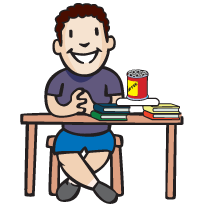Boston Children's Museum
308 Congress Street, Boston, MA 02210
617-426-6500
© Boston Children’s Museum 2024
Website Design by JackrabbitDesign engineering is a great way to teach kids problem solving, teamwork, materials and tool use and the design process in general. In this activity, your students will also learn about structures and strong shapes used in structural design.
Gather all materials, separating equal amounts of the washers or pennies for each team.

Set the context by asking kids about bridges they’ve seen before. What are bridges used for? What kinds of things do they help us get across? What kinds of things cross bridges (cars, bicycles, people, etc.)? What do they think makes bridges strong? If possible, show them some pictures of bridges, or even better, take them on a walk to a bridge that is nearby. You could also ask a couple of volunteers to draw on chart paper a bridge they’ve seen before.
Tell your students that you’d like them to be bridge engineers and create a bridge using just 5 sheets of recycled paper and a small amount of masking tape. Their bridge will need to cross over 8.5 inches of “water” (a gap of 8.5 inches between 2 books or boxes), it cannot touch the “water”, and it cannot be attached to the “river banks” (the books or boxes). The 8.5 inches will be easiest to measure if you place a standard-sized piece of paper in between the 2 books or boxes, as these pieces of paper measure 8.5 inches wide. The students can color this paper to look more like water. Testing the strength of the bridge will be done by placing the coffee can or take-out container on the bridge and adding weight until the bridge collapses.
Once each team has created and tested at least one bridge, bring them together to discuss their findings. Have each team share what they’ve tried so far and what their results have been. This discussion should last no more than 10 minutes.
Send your students back to their bridges and have them create a new design or refine their old one based on what they learned from the discussion with the other teams.
SESSION 2
A few days after trying the bridges activity, introduce a new challenge: